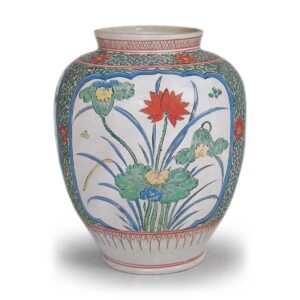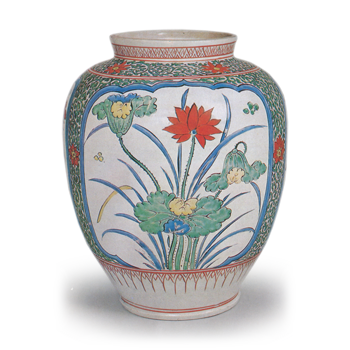
Height 30.2 cm, mouth diameter 13.8 cm, body diameter 24.9 cm, bottom diameter 13.4 cm
The body has large windows on three sides, each of which depicts a lotus, peony, and chrysanthemum. The brush strokes in black are smooth and soft, and the red of the flowers has a warm and unique color tone. On the other side, peonies and chrysanthemums are painted one by one without any background, filling the entire window, showing the influence of the so-called Nanjing akae and Kuresu akae styles. In particular, it is rare to find a jar with a single lotus depicted in this way. This pair of jars with almost the same design was recently imported from Europe, but there are almost no similar examples in Europe, let alone Japan.
The shape of the mouth slightly opening outward, the body stretching from the shoulder to the bottom, and the hem being narrow is also a form rarely seen in early Arita colored porcelain agarwood vases, including those made by Kakiemon ware. It is quite difficult to estimate the date of production, but it was probably made between the Kanbun and the beginning of the Enpo period, from the 1660s to the 1670s.



